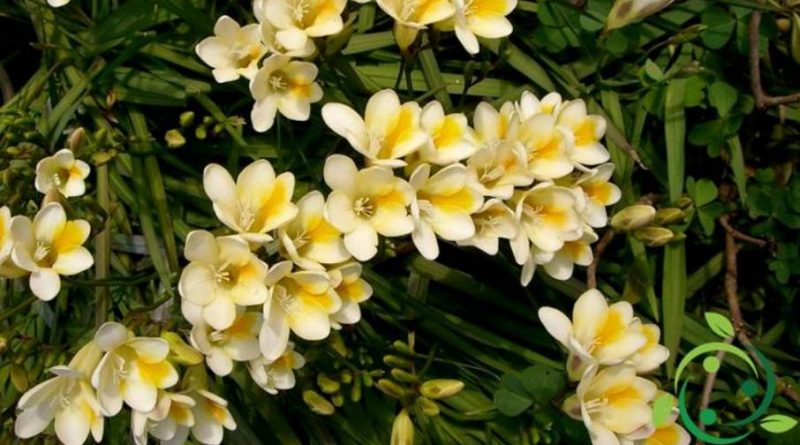How to cultivate freesias
How to cultivate freesias
The Freesias (Freesia Eckl. Ex Klatt) are species belonging to the Iridaceae family and originating from South Africa. They include perennial herbaceous species, bulbous, of which the best known is the Freesia refracta and its numerous hybrids and cultivars.
In this tab we will see the essential features and how to grow Freesia.
The freesias are plants supplied with a corm, with clusters of very fragrant, bell-shaped corollas, in various colors almost always spotted with yellow. These plants have a small oval bulb, sword-shaped leaves, 20-30 cm long and about 2 cm broad, a floral scape longer than the leaves, often curved and branched, ending with an ear with 6-12 flowers facing ‘tall, tubular, about 3 cm in diameter, of a variable color from pure white, cream, yellow to more vivid colors from orange, to red, to blue, to violet. The seeds are large and roundish.
For the cultivation of freesias, being apparently fragile but ultimately very rustic plants, we need to follow some simple tricks. Let’s start with the climatic aspect. Freesias do not tolerate areas with excessively harsh climates.
For this reason, to be grown in the garden, more northern areas must have the foresight to preserve the bulbs during the winter period.
Ultimately in the northern areas of Italy or other countries with similar climates, it is good to dig up the corms and keep them in a cool place, placed in a paper bag or in a box full of peat to store in a dry place.
These bulbs can then be replanted the following spring, or proceed with the planting of the bulbs in pots or in small boxes, to be kept in a sheltered and warm environment.
If, on the other hand, you are in warmer areas, just like the islands of the southern Mediterranean or southern Italy, freesia bulbs can also be planted in autumn.
For the planting of the freesia bulbs you have to choose a very sunny area or where the sun can still reach the plant even partially. In fact, freesias are plants that need a lot of direct light to grow and, above all, to flourish.
Furthermore, it must be ensured that the area is protected from drafts and temperature changes, especially when the cultivation is done on terraces or balconies.
The substrate on which to grow freesia must be very soft and highly draining, possibly composed of soil for flowering plants mixed in equal parts with sand and fertilized with earthworm humus or mature bovine manure. If cultivated in pots it is good to increase the drainage by placing at the base of these expanded clay or very large gravel.
As for water supplies, follow the following criteria; being a bulbous plant the plant should be watered only when the soil in the superficial layers dries, to avoid stagnation or in any case excessive vegetation that does not favor an optimal flowering.
Subsequently, after the flowering, from the moment in which the leaves begin to wither, the waterings must be suspended to allow the corms (bulbs) to enter in vegetative rest.
To obtain abundant and colorful blooms, in addition to choosing sunny areas it is good, during the vegetative period, to enrich the soil with fertilizer with a high potassium content, typical of fertilizers for flowering plants, to be administered directly diluted with irrigation water . It is advisable to make this fertilizer every 15-20 days from the moment of vegetative growth of the plants until the beginning of flowering.
For the freesias grown in the garden it is better to make, at the beginning of spring, or before planting new bulbs of mature manure or earthworm humus mixed with the cultivation soil. In the freesia cultivated in pots, remember to carry out the repotting every 2 or 3 years so as to take the new bulbs formed and start the cultivation of other plants.
In fact, as regards the multiplication, as for other bulbous plants, freesias produce small corms which, in spring or autumn, must be unearthed to be cultivated individually. The bulbs, in any case, can be easily found both in specialized shops and by buying them online.
Finally, a particular attention to the possible diseases of these plants. The freesias can be attacked by mites and aphids, for this reason it is advisable, if these are present, to perform treatments based on Marseille soap or garlic macerate.

